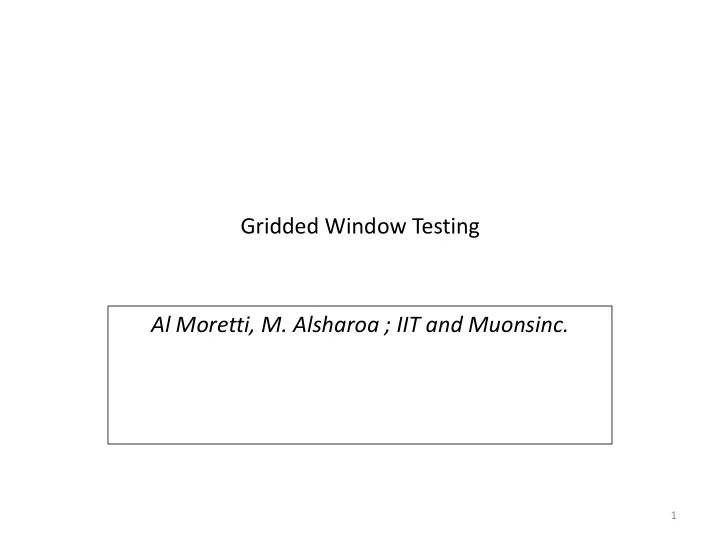

Gridded Window Testing Al Moretti, M. Alsharoa ; IIT and Muonsinc. 1
Outline Slides 3 and 4 are from the work of Mohamed Alsharoa formally of IIT and Muonsinc Inc. Slide 3 shows the possible patterns of the grids or grill. Slide 4 shows Ansys calculation of the electric field gradient. Describe a ideal that may suppress breakdow in a magnetic field. 2
I. DESCRIPTION OF THE CLOSED CELL 805 MHZ TEST CAVITY Design variables: • tube outer diameter, tube wall thickness • number of tubes and grids • grid spacing • type of coolant and coolant flow rate • grid configuration: physically and electrically connected grids or plane grid (waffle grid) Fig. 1a Cross-sectional view of the closed-cell 805 MHz test cavity Fig.1.b waffle grid Fig. 1.b connected grids Fig. 1.c Description of the model The cavity model contains a Be-window from one side and a gridded-tube structure from the other side that was built in place of the other Be- window at the same location. To reduce the computation time, quarter of cavity is considered, and the tubes are represented as solid cylinders for the modal analysis for solving for E and H fields. 3
E max at the tube surface/E max at the center of the cavity (tubes field enhancement) = 1.8 Fig. 12 Contour plot of the magnitude of the electric field Fig. 13 Contour plot of the magnitude of the magnetic field 4
Discussion of Idea the Gridded Window Suppress Breakdown The grids minimize the surface area subjected to the high gradient. If the grids are rotated 90 Deg. to each other, the surface area is reduced even more. The RF electric and magnetic field pattern is also different which could effect the focusing efficiency of the DC magnetic field. This technique works to prevent multipactor in klystrons. It is called castelating. The aluminum gridded window have been already made. So I think it should be test at very end of this run. 5
Recommend
More recommend